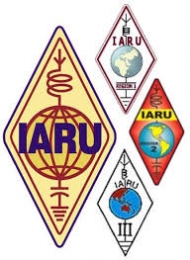 Via ARVic, original post here dated October 13 2015.
Via ARVic, original post here dated October 13 2015.
The International Amateur Radio Union (IARU) Administrative Council met last week in Bali, Indonesia, just ahead of the gathering of the IARU Region 3 Conference.
It sets overall policy and management for the IARU, and has urged all IARU Member Societies to encourage their governments to recognise the importance of the Amateur Radio Service and its radio antennas.
The broad resolution calls the IARU to advocate for planning and development regulations that properly recognise the importance of an amateur radio antenna, and do not place undue restrictions on antenna erection, and to discourage fees for the use of an amateur antenna. It suggests advocating that the Amateur Radio Service has a non-pecuniary nature, and is popular in the student and senior communities.
The IARU has also completed its preparations for the World Radiocommunication Conference to be in Geneva next month. The IARU positions and strategies for each of the WRC-15 agenda items that may impact amateur radio were reviewed, including proposals for a secondary amateur allocation near 5.3 MHz.
Possible future agenda items for the next WRC, anticipated in 2019, include an amateur allocation at 50 MHz in Region 1 and global harmonisation of the 1800 – 2000 kHz allocation. It is anticipated that a significant IARU effort will be needed for WRC-19 to defend the amateur allocations between 137 and 960 MHz, in light of the pressure for spectrum for small non-amateur satellites. Close coordination of regional IARU efforts will be required.
The growing demand for satellite coordination in the amateur bands has led the adoption of revised Terms of Reference for the IARU Satellite Adviser, and to agree in principle, to new guidelines for satellite coordination. A Deputy Satellite Adviser has been appointed to assist.
The IARU Administrative Council agrees that a more proactive approach is needed to international standards bodies to achieve IARU objectives to reduce radio spectrum pollution from unwanted radio frequency emissions.
It is further looking at the IARU Constitution and By-Laws to introduce some degree of flexibility in dealing with second societies – but a decision will mean further development and consultation.
It received the International Beacon Project, and will further consider the assessing HF propagation in real time, and relevant technological advances.
In a departure from recent IARU practice, it was decided to adopt a continuing theme for the annual World Amateur Day on April 18 each year of “Celebrating Amateur Radio’s Contribution to Society.” A special appropriate theme may be adopted for any given year.
A plan to collect consistent licensing data from IARU Member Societies was formulated and agreed. The environmental impact and burden on the international QSL Bureau system of unsolicited and unwanted QSL cards was discussed, and will be revisited at a future meeting.
Attending the meeting were IARU President Tim Ellam, VE6SH/G4HUA; Vice President Ole Garpestad, LA2RR; Secretary Rod Stafford, W6ROD; regional representatives Don Beattie, G3BJ, Faisal Al-Ajmi, 9K2RR, Reinaldo Leandro, YV5AM, José Arturo Molina, YS1MS, Gopal Madhavan, VU2GMN, Shizuo Endo, JE1MUI and recording secretary David Sumner, K1ZZ. Also present as observers were Jay Bellows, K0QB, from Region 2 and Wisnu Widjaja, YB0AZ and Ken Yamamoto, JA1CJP, from Region 3.
A virtual meeting will be held early in 2016. The next in-person meeting of the Administrative Council will be near Vina del Mar, Chile, in October 2016 in conjunction with the IARU Region 2 Conference.
